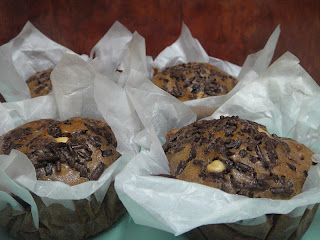The History...
Chennai, formerly known as Madras, is the capital of the state TamilNadu and is India's fourth largest city. It is located on the Coromandel Coast of the Bay of Bengal. With an estimated population of 7.60 million (2006), the 400-year-old city is the 36th largest metropolitan area in the world. Chennai was the site chosen by the British East India Company for a permanent settlement in 1639. It is also a highly political city, as can be seen from the many gradiose memorials to politicians that line Marina Beach.


Madras boasts of a long history from the English, through the British Raj to its evolution in the late 20th century as a services and manufacturing hub for India. Also, the pre-city area of Chennai has a long history within the records of South Indian Empires. The city of Madras, which is derived from Madraspatnam, has now been renamed as Chennai. There are different versions about the name of this once sleepy coastal village. When the British landed here in 1639 A.D. it was said to be part of the empire of the Raja of Chandragiri. The British named it Chennapattinam, after they acquired it from Chennappa Nayakar. Gradually, it became Chennai.


The British are said to have built Fort Saint George, the present seat of power, in 1640. It was named after the patron saint of England. The Vestiges of Old Chennai infer that the original village of Madraspatnam lay north of the proximate to Chennapattinam. In course of time and with rapid growth, the two virtually became one. It is also inferred that the English preferred the name Madraspatnam, while Indians chose Chennapattinam.
School of Industrial Art was started in 1850, Civil Engineering College in 1834 and Madras Medical College in 1835,etc. The Madras University was started in September 1857. The Chennai High Court was created in June 1862. The Railway Company in Chennai was formed in July 1845. The first construction work began on 9th June 1853 and in 1858, South Indian Railway was formed having Chennai as the Railway Headquarters. Lord Hobart who was the Governor from 1872 to 1875 initiated Chennai Harbour project.
Fairs & Festivities...
Fairs and festivals are held in different parts of the city throughout the year. The festivals associated with Hindu temple are more than 500 in a year. Apart from the traditional fairs and festivals, modern fairs such as exhibitions and national festivals like Independence day and Republic day are celebrated in the city.
Following are some of the important festivals celebrated in the city;
The Brahmotsavam (including the Arupathumoovar festival) of Kapaleeswarar temple located in Mylapore is celebrated in the Tamil month of Panguni March-April) and it lasts for ten days. A big fair is held near the temple. The floating festival held in January-February in Mylapore is also very popular.
Of all the festivals celebrated in the Parthasarathy temple in Triplicane, the most important is the Vaikunta Ekadari observed (December-January).
The Brahmothsavam in the month of Chithirai is celebrated for ten days. The car festivals falls on the seventh days and is attended by more than 50000 devotees..The Kirthigai (Karthigai asterism) day every month is a day of festival in the Vada Palani Andavar temple in Kodambakkam.
The annual festivals are Kanda Sashti in Ayppasi month and Uthiram in Panguni month. The floating festivals during the Panguni Uthiram is also well attended.
The Kandaswami temple in Sowcarpet celebrate twenty festivals in a year.
The Kaligaambal Temple in Parrys and Angalaparameshwari Temple in Choolai, are ever celebrated by numerous deevotees for its power and miracles.
The Jathirai festival in Adhi Mottaiamman temple attracts a large number of crowds..Some important festivals celebrated by the Siva-Vishnu temples throughout the city are Navarathri, Sivarathri, Vaikunta Ekadasi and Sri Ram Navami.
The Muslim festivals also attract crowds and give rise to fairs in the city. Easter, Christmas and the New year are marked by impressive festivities in the churches in the city like St.Thomas and the Cathedral Church in Santhome.
Apart from the religious festivals, the Chennai Sangamam that happens during the first week of every new year, attract huge crowd and creats a good, healthy mood in the city.
The trade fair (sutrulla porutkatchi) conducted by the Tourism ministry every year in the Island Ground for around 3 months, is another notable event!
As a kid i use to look forward for the Brahmotsavam of Kapaleeswarar temple, Navarathri, Sivarathri and the Trade fair, for the joy and fun i use to have with my sisters...now being away from the city, all those make me nostalgic!
(Photo Courtesy: The Hindu & Wikimedia)


































